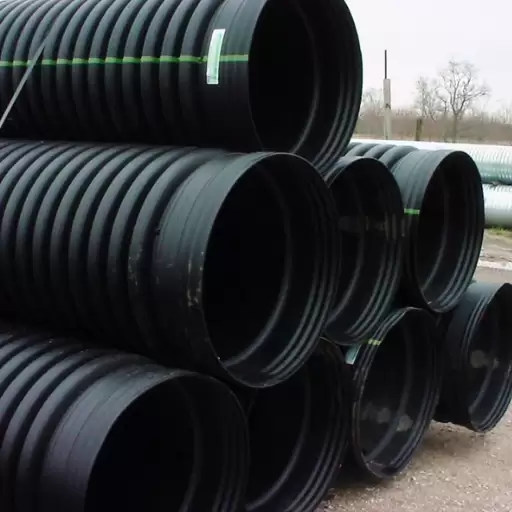It is important to note that high-density polyethylene (HDPE) pipes are significant in many industries as they offer a flexible and durable solution for different pipework demands. This fully inclusive guide intends to ensure that the readers are well informed about the HDPE piping systems, their composition uses, and how they outdo other conventional materials. In addition, we will discuss the aspects of HDPE that relate to its environmental impact, how to install it, and how it can be maintained, thus leaving you with all the information needed to come up with good decisions on your projects. Contractors, engineers, and homeowners must understand HDPE since it is crucial in infrastructural development and preservation efforts.
What is HDPE Pipe, and Why is it Popular?
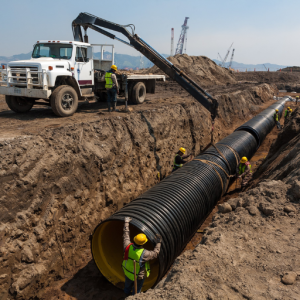
Image source: https://en.wikipedia.org/
High-Density Polyethylene (HDPE) pipe made from HDPE resin is used as a plastic pipe. This material possesses a high strength-to-density ratio and is commonly found in numerous applications due to its outstanding resistance to corrosion, chemicals, and UV radiation. Lighter than traditional piping materials such as metals or concrete makes HDPE less cumbersome during handling and installation. Inside soil movement or pressure difference doesn’t break an elastic natured HDPE pipe. Therefore, low maintenance requirements combined with cost-effectiveness make their longevity epitomize supply water needs and industrial water drainage systems, among others.
Understanding High-Density Polyethylene (HDPE)
High-density polyethylene (HDPE) is a thermoplastic polymer produced from petroleum. The molecule’s dense structure ensures high tensile strength and durability. HDPE is often used to make containers, bottles, pipes, etc. due to its resistance to impact and chemicals. Besides, HDPE has low moisture absorption rates, which is suitable for water-resistant applications. Its versatility makes it easily recyclable, thus increasing its attractiveness in sustainability. In addition, HDPE is preferred by industries because of its long life, allowing them to save costs over time and reduce the need for frequent replacements. It is ultimately chosen for use in several engineering and construction projects as it possesses specific properties.
Advantages of Using HDPE Pipe
The use of HDPE pipe comes with several benefits that make it ideal for different uses. Since HDPE does not corrode, I can trust it even when the environmental conditions are harsh, and there are no signs of degradation over time. Moreover, transporting and installing it has become less tedious due to its lightweight, saving time and project costs. Also, ground movements are avoided through the flexibility of using HDPE, thereby minimizing the chances of breaks or leaks occurring during such times. Additionally, such things as its longevity and minimal maintenance required present HDPE as an economical choice, eventually ensuring that my undertakings remain efficient and cost-effective at all times.
Common Applications for Polyethylene Pipe
Due to its durability and versatility, polyethylene pipe is widely used in various applications. Often, I see it utilized in the transportation of drinking water because it does not rust easily, ensuring that consumers receive safe and clean water. HDPE pipes are also standard in agriculture, especially for irrigation systems with flexible membranes that can withstand ground movements, thus providing durable solutions. Another widespread application is when I purchase those materials for use at construction sites, particularly in underground utilities and drainage systems where their strength is required, and their lightweight nature enables quick installation with long-lasting performance.
How is HDPE Pipe Manufactured?
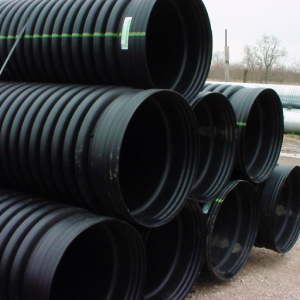
The production of HDPE pipes follows several vital steps that guarantee their quality and performance. At first, the resin made up of polyethylene is introduced into an extruder, where it melts down and then mixes with additives to enhance its properties. This molten polymer is then shaped into a pipe through a die that determines the diameter and wall thickness of the finished product. The formed pipe is cooled using water, which helps harden it into a solid structure. A cooling process follows the formation, after which desired lengths of HDPE pipes are taken out before being subjected to strict quality control tests to ensure that they are intact and strong enough before being packaged and ready for distribution. By following this efficient manufacturing process, these pipes will have satisfied industry specifications and hence can be applied in different ways according to what customers require.
The Production Process of HDPE Pipe
The process of making HDPE pipes involves several steps that aim at maintaining high quality and performance:
- Material Preparation: It starts with preparing polyethylene resin, which is often drawn from unique grades to suit specific applications. This resin may also be combined with other substances, such as antioxidants and UV stabilizers, to improve property performance.
- Extrusion: The pre-prepared resin is then fed into the extruder, which is heated until it melts. The molten material is then forced out through a die as a continuous pipe shape. This stage customizes the diameter and wall thickness according to the given specifications.
- Cooling and Sizing: After extrusion, hot pipes are cooled in a water bath so that their shapes can solidify. This step ensures the accuracy of sizes and smoothness of surfaces.
- Cutting and Quality Control: Once the HDPE pipes have cooled, they are cut into the desired lengths. Each batch undergoes rigorous quality control checks, including industry-standard tests for strength, density, and resilience, before being packaged.
- Packaging and Distribution: They eventually get packed for transportation to different destinations, thus maintaining their quality during delivery.
This systematic approach ensures that HDPE tubes are efficient, strong, and suitable for diverse uses, such as industrial or water distribution.
Key Manufacturers and Popular Brands
My research revealed that several outstanding HDPE pipe manufacturers exist. Among the largest manufacturers is JM Eagle, known for its massive production, novelty, and wide range of pipes. Also, an important brand is Advanced Drainage Systems (ADS), which concentrates on drainage innovation and sustainability. Uponor, on the other hand, constructs high-performance piping systems used in residential water distribution and plumbing.
Quality Standards and Certifications
Those involved in the HDPE pipe industry must comply with quality standards and certifications for safety purposes. Among these include ASTM (American Society for Testing and Materials) and ISO (International Organization for Standardization), which give guidelines on material properties and performance testing of HDPE pipes. There are also products certified by NSF (National Sanitation Foundation) for drinking water applications because they meet demanding safety requirements. When leading manufacturers adhere to such standards, they demonstrate their commitment to quality and customer satisfaction. To get detailed specifications, visiting relevant regulatory bodies’ websites or industry standards organizations’ websites is advisable.
What Are the Specifications and Sizes of HDPE Pipe?
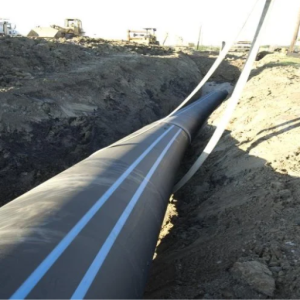
There are various sizes and specifications for HDPE pipes to accommodate different applications. The most common ones have diameters ranging from ½ inch to 63 inches. Sizing is usually done according to the Standard Dimension Ratio (SDR), which is the diameter of the pipe relative to its thickness. Commonly used are SDR 11, SDR 17, and SDR 26, where lower numbers imply thicker walls and higher pressure ratings. Similarly, HDPE pipes are made in diverse pressure classes as required by high-density uses. Therefore, selecting the correct specifications depends on whether they are intended for water supply, drainage, or industrial purposes to ensure efficiency and durability.
Different Diameters and Wall Thicknesses
When I think about HDPE pipes, I need to know the different diameters and wall thicknesses. Usually, my projects require HDPE pipes that range between ½ inch to a maximum of sixty-three inches in diameter. Based on what I have learned thus far about the Standard Dimension Ratio (SDR), this ratio significantly determines how much pressure such a pipe can bear. For example, when it comes to high pressures, I will go with SDR 11, or medium ones, I opt for SDR 17 so that they can be used for applications like water distribution or draining off excess water after rains fall, respectively. Selecting an appropriate diameter and thickness allows me to increase the efficiency of my piping system in various environments while making it last longer at the same time.
Coil Options and Lengths
Diameters and application requirements are the prime factors affecting coil options and lengths of HDPE pipes. Mainly, HDPE pipes come in coils or straight lengths with coil lengths ranging from 100 to 2,500 feet, which ensures flexibility during installation, especially for larger projects. Coiled pipes are commonly used in applications requiring long runs with a few joints. In return, it reduces costs and shortens the time to complete installation. Besides, the size of the spiral pipe is significant in its usefulness; smaller sizes have longer coils, while bigger ones can be split into small units to transport and handle easily. Eventually, selecting the appropriate coil option and length is critical for different operations to be done conveniently.
SDR Ratings and Their Importance
The thickness and pressure capacity of HDPE pipes are mainly determined by Standard Dimension Ratio (SDR) ratings. SDR rating is obtained by dividing the diameter by wall thickness, enabling engineers/contractors to gauge how much pressure a pipe can bear inside without bursting outwards. Low SDR values imply thick walls hence suitable for high-pressure applications whereas high SDR numbers suggest thin walled ones used in low-pressure surroundings Understanding these simple terms is necessary as this will allow choosing the right pipe type considering project specifications thus it enhances safety measures as well as durability within different installations. SDR-based selection optimizes performance and ensures compliance with industry standards, forming a significant basis for sound engineering practice.
How to Install HDPE Pipe?
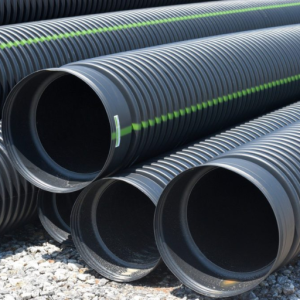
To install High-Density Polyethylene pipes, several crucial steps have to be followed to achieve a successful and more effective installation. First, prepare the trench or installation site by ensuring the area is free from debris and has a stable base. Next, the pipe should be laid in the trench, maintaining an accurate slope for drainage systems and avoiding sharp bends. To connect sections properly, use fusion welding or other right-joining techniques according to the manufacturer’s instructions. Before backfilling the trench after installation, it is essential to conduct a pressure test to verify that joints are intact and the overall system functions appropriately. Finally, the surface area should be restored, replacing any disturbed landscaping that may not have been appropriately graded. Following these steps, HDPE pipe installation can be efficient and reliable with long-term application performance.
Preparation and Planning for Installation
Before I embark on this HDPE pipeline installation process, thorough preparation and planning must be done so as to mitigate any future challenges that may arise during this whole exercise. First, I assess the project specifications to know which pipe size will be required, the SDR ratings, and how many meters or kilometers it will stretch. Besides this, I also review local regulations and permits, avoiding legal tussles since they might contravene some set rules by those particular authorities governing such activities within their jurisdiction. Next, I carry out a soil survey to determine what type of soil it is as well as the best trench line, looking at things like drainage and existing utilities, among other factors where ground stability should also not be left behind. Beforehand, i buy all necessary tools and materials such as fusion welding equipment along with safety gear required for creating conducive environment during working procedures being carried out . Finally, I designed an implementation timeline, allowing for flexibility in case of unexpected challenges, ensuring that everything was meticulously planned so that there would be no hitches whatsoever.
Fusion Techniques and Jointing Methods
HDPE pipe fusion installation demands techniques that will guarantee the creation of firm and dependable joints that can endure different environmental conditions. The common approaches include butt, electro, and socket fusion methods.
- Butt Fusion: This technique involves aligning two pipe ends while heating them in a controlled manner under certain conditions until their edges soften. Afterward, the surfaces are brought into contact before cooling and solidifying, resulting in a permanent joint. It is used to join large-diameter pipes and is frequently employed for underground and above-ground applications.
- Electrofusion: This method uses specially designed fittings with heaters embedded inside them. Fittings with electrically conductive coils are mainly utilized. When an electrical current is applied to the coils, it generates heat that melts the surrounding pipe and the rod. Smaller diameter pipes particularly require this method, not to mention situations where access is difficult.
- Socket Fusion: This approach uses a heated socket alongside a heated tubing end. It fits tightly to the required depth, with both surfaces heated prior to joining them together by inserting a pipe into the socket. This is suitable for small sizes and is normally found in domestic installations.
Choosing the appropriate fusion technique ensures the reliability and durability of the piping system. Proper training and adherence to industry standards during the fusion process are crucial for successful installations.
Common Challenges and Troubleshooting
I come across several challenges when working on HDPE piping and fusion techniques. Most oftenly I face alignment problems during butt fusion which makes weak joints. Furthermore, I often use alignment tools so that I measure twice before heating my pipe ends.ASC2)The other difficulty is achieving correct temperature/time combination for electrofusion since deviations can result into poor melting of tubes or excessive melted pipes. Therefore, I always refer to manufacturer guidelines plus use calibrated equipment. Socket fusion may also be problematic if there’s no insertion of such kind up to some particular limit; thus just let me practice this step very carefully so there wouldn’t be any mistakes. As a result, paying attention to every step of the procedure and conforming to established standards within the industry goes far in overcoming these problems.
What are the Benefits of Using HDPE Pipe in Various Industries?
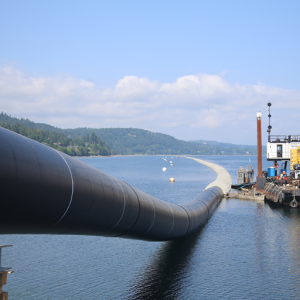
HDPE (High-Density Polyethylene) pipes have several advantages in different industries due to their unique properties. At first, they are highly resistant to corrosion and chemical damage, making them ideal for transporting a wide range of substances without the degradation hazard. Additionally, HDPE pipes have excellent flexibility and strength, making installing them on challenging terrains easier and minimizing the chances of breakages or leaks. They are also lightweight, easing handling and thus lowering shipment costs. Moreover, HDPE is environmentally friendly as it is fully recyclable, thereby minimizing waste and promoting sustainability in construction projects. Generally, these features make HDPE the best option for use in water supply, wastewater management, and gas distribution.
Durability and Longevity in Municipal Applications
Municipal applications such as water supply and waste management systems require durable materials because they are subject to heavy usage over a long period. Reports from various sources suggest that the life expectancy of HDPE exceeds 50 years, while a bit of maintenance can even extend this term to much longer periods. Their resistance to corrosion, abrasions, and other harsh environmental conditions enables them to last longer, especially in difficult locations where they may be used over extended periods. In addition, HDPE can withstand temperature fluctuations and variable pressures, thus increasing its lifespan and reducing the risks of failure over time. The pipes made out of this material are rigid and last long; therefore, municipalities spend less on replacements besides avoiding inconveniences associated with installations, resulting in the rising demand for HDPE as an infrastructure material alternative compared to traditional pipes used domestically.
Cost-Effectiveness in Water and Wastewater Management
Several key factors show the cost-effectiveness of HDPE pipes in water and wastewater management, according to my experience. Firstly, excellent durability means lower maintenance and replacement costs with time, which is essential for municipalities operating on tight budgets. Furthermore, these pipes are lightweight and flexible, making them easy to install, reducing labor expenses and decreasing project periods. Moreover, HDPE’s long life span saves much money since municipal governments can use the funds for other critical infrastructure needs instead of frequent pipe replacements. Investing in HDPE pipes for water and sewage management is a strategic decision.
Flexibility and Resistance in Mining and Industrial Use
HDPE pipes offer exceptional value when used in mining and industrial applications because they are incredibly flexible and resist abuse. Their ability to withstand bending without breaking makes them ideal for installations in rugged terrains or areas with varying loads. In addition, HDPE has resistance against chemical attack, abrasion, and impact; hence, it is reliable even under harsh conditions, including those experienced in mining. The material’s strength reduces downtime and maintenance costs; thus, it is economical for miners to use it. Besides being lightweight, this feature simplifies its transportation and handling, which makes it possible to install faster over more expansive areas at remote location points. Flexibility and resistant qualities associate HDPE with industries desiring robust, durable piping solutions.
Reference sources
- Download HDPE Handbook Chapters – Plastic Pipe Institute
- HDPE Pipe: The Comprehensive Guide to High-Density – Jieya Twin Screw
- A Comprehensive Guide to HDPE Pipe Fittings: Types and Applications – NIF HDPE
Related Articles:Specification Sheet for HDPE Pipe Sizes



